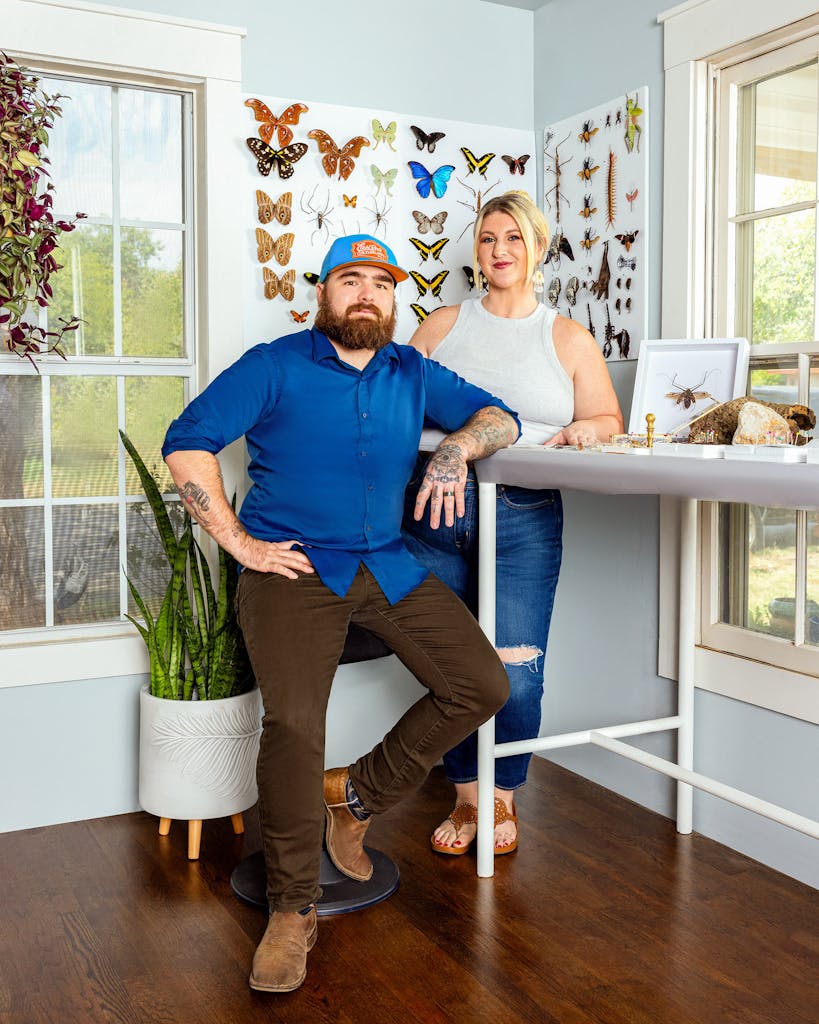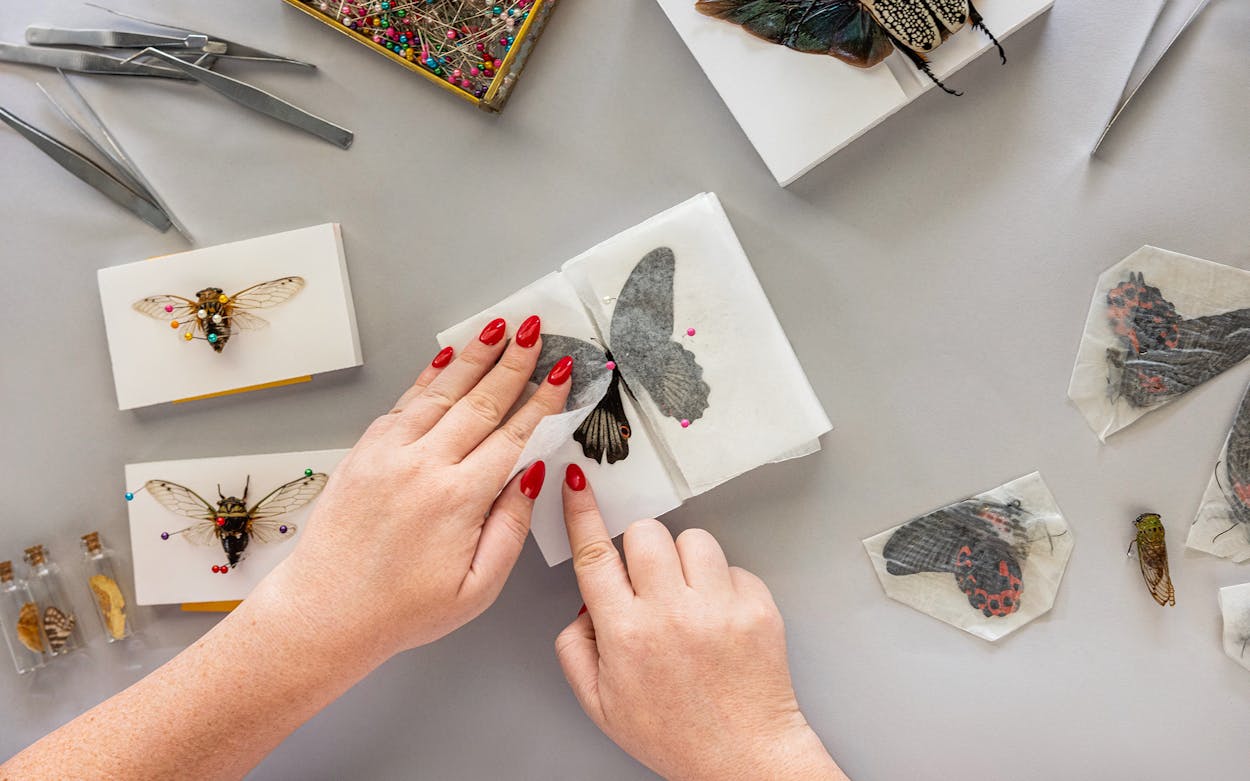Morgan Loftin, who is 33, is the cofounder, with her husband, Micah, of Pinned Ptera, an insect taxidermy business they operate out of their home in Denton.
I grew up in deep East Texas, in Wamba, a swampy suburb of Texarkana. We had a barn where there were these huge yellow garden spiders. They’re as big as your hand, and they build webs that can stretch four feet wide. They’re really intimidating and scary, but they serve a wonderful purpose—they protect your garden. I would throw giant grasshoppers into a web and watch the spider paralyze them. That’s how I entertained myself as a child.
Micah and I went to a butterfly conservatory in Key West in 2021. A butterfly landed on my hand, and Micah wanted to get me a taxidermied version as a gift. The conservatory didn’t have one available for sale, so Micah purchased one online. But when it came in the mail it was not spread out. So he watched some YouTube videos to learn how to pin it. We ended up framing it together. That’s what got us started.
The specimens we use are not killed. They are ethically sourced from microfarmers, conservatories, and private breeders. Butterflies typically die within a few weeks of emerging from the cocoon. Once they’ve gone through the transition from chrysalis to butterfly, they’ve made it to the end of their life cycles, and their sole prerogative is to mate and lay eggs before they pass. It’s easy to just wait for a specimen to die, and then our sourcer picks it up off the ground and wraps it up.

A butterfly usually arrives pressed in wax paper, like a little triangle football. We unwrap it and put it into a Tupperware container with damp paper towels and put the lid on and leave it like that for two or three days so the body can rehydrate. Once it’s hydrated, we pin the body on a foam board and press the wings flat and hold it down with wax paper and pin around the wings through the wax paper. For an average-sized butterfly, you’re going to use about twenty sewing needles.
When we started pinning, it felt magical. Getting to look at a specimen is one thing, but getting to touch it and handle it and put your face right up to it and study the scales is a whole different can of worms. Everyone wants to pet a cheetah at the zoo, but they can’t.
We’re parents of a toddler, and so we really can only pin at night while he’s asleep. When we first got started, we probably averaged fifteen minutes a specimen. Now I pin a butterfly in like fifteen seconds. You just become more confident. But a spider still takes about ten minutes, which is a long time, at least in our terms. The legs are so brittle on a spider. They’re comparable to pine needles. Tarantulas are really hard. Their legs are hollow and brittle, like dry penne pasta, and they crack and cave in like eggshells.
Micah makes a lot of custom pieces. We have a casualty box: specimens that just break to the point where we don’t feel comfortable selling them to people. He’ll Frankenstein a bunch of parts together. Once, he had a beetle body that he put scorpion legs and claws on. He did grasshopper feet and then he used the owl eyes of a butterfly wing to make enlarged eyes on it. And it had grasshopper wings and he used a rhino beetle horn as the tail because it curved up. It’s very menacing.


After you pin a specimen, you don’t get to admire your work for a few days because you have to wait for it to dry. It’s a mystery until you’re taking the last paper off, because you can see it a little bit, but not to the full extent of its beauty.
We’re a Christian family and I will say it made me feel a deeper connection with my creator. Old age comes for everybody, and butterflies really peak and become their most beautiful at the end of their lives. I think that helps people to digest it and romanticize it instead of seeing it as a sad thing.
We got our start at the community market down the road from our house. I remember the first time we went, we were like, “Okay, if we sell four butterflies, we’ll recover all of our money that we’ve invested.” We showed up with fifteen pieces and we sold out that day. We were in shock. I remember I took a screenshot of my sales report and sent it to my family because I’m pretty sure my dad thought I was crazy.
This article originally appeared in the November 2023 issue of Texas Monthly with the headline “Morgan Loftin, Insect Taxidermist.” Subscribe today.
- More About:
- Working Life
- Style & Design
- Critters
- Business
- Animals
- Denton









